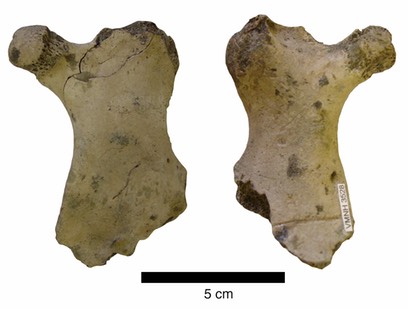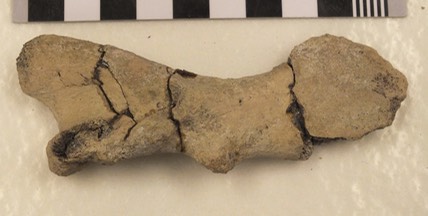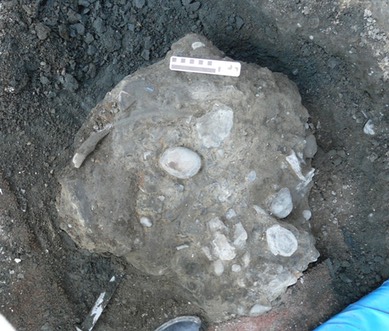Long bones have an enormous range. Birds tend to have very slender, gracile bones. Turtles and crocodiles then to have larger and thicker limbs. Whales have such an enormous diversity in size that some appear gigantic and others are quite small.
For most of these limb bones the heads (or ends of the bones) will have sites where they articulate (come into contact) with other bones. This will tend to lead towards smooth, rounded ends or knobby projections. HOWEVER, in very young individuals, those who are still growing, the ends of the bones may not have fused. In this case, after the animal dies the ends of the limbs fall off. What you will see in this case is a bumpy texture at the end (this is the growth region).
Animal limbs found at this site include:
Whale humerus (upper arm/flipper), radius and ulna (lower arm)

The humerus is in the center left of the picture. The radius and ulna are the two parallel bones to the left of the scale bar.
Seal femur (upper leg)

This is the femur of a seal. It is just one bone, but pictures of it from the front (ventral view) and back (dorsal view).
Turtle humerus

This is the humerus of a sea turtle.
Bird humerus

This is the humerus from a gannett, most likely. Loon bones have been found as well.
Ribs

The curved, long bone on the left is a whale rib. The circular bones are the ends of vertebrae. The large, oval bone below the right side of the scale bar is part of a scapula (shoulder blade).